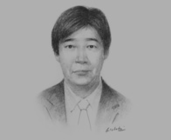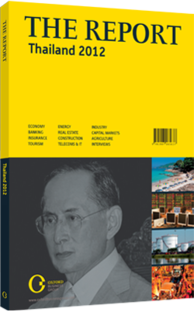OBG talks to Minoru Furusawa, President, Japanese Chamber of Commerce (JCC), Bangkok

Interview: Minoru Furusawa
Investor confidence indicators published by Japan External Trade Organisation have not shown a souring of investor sentiment in Thailand, despite the turmoil of recent years. How do you explain this?
MINORU FURUSAWA: The JCC held 104 consultations for new expansions by Japanese firms from April to September 2011, 3.2 times up year-on-year. From October to December, during the floods, there were only 33 cases. In recent years Thailand has faced problems including political turmoil, economic instability such as the Asian financial crisis, the Lehman Brothers collapse and others, and natural disasters like the big floods of 2011 and the tsunami. However, the investment atmosphere is still positive because Thailand possesses the potential to overcome those risks. Thailand has sound infrastructure, a wide range of supporting industries, the geographical benefits of a central location in Southeast Asia, a highly capable labour force and an increasing number of high-income citizens.
As Japanese companies increasingly seek opportunities in foreign markets, how much of an appetite is there for acquisitions in Thailand?
FURUSAWA: The tight situation for manufacturers in Japan caused by the appreciation of the yen and the continuous shrinking of the domestic market have resulted in a very severe situation, which has led to an increasing number of industries looking for new channels overseas. When Japanese industries look to expand their business abroad, Thailand holds strong potential as a production and export base. In terms of its position as a production centre, Thailand and Japan have a long economic relationship, as seen in examples such as Toyota and Panasonic, which have been operating here for 50 years. Those producers also have many subcontractors in Thailand. Over the course of this long record of manufacturing in Thailand, many types of know-how have been accumulated. In addition, new Japanese industries that possess superior technology are investing in their Thailand-based subcontractors.
As Thailand seeks to promote value-added production to avoid the “middle-income trap”, in which sectors do you see Japanese technology playing the most important role in the coming decade?
FURUSAWA: The Thai government is focusing on this issue and showing a clear intention to create more value-added industries. The Board of Investment (BOI) in particular aims to focus on knowledge-intensive and value-added industries. According to a JCC survey, the annual wage rise of 5% is doubled due to the shortage of labour, which increases the pressure of rising personnel expenses. Japan also experienced the same thing during the period of rapid growth in the 1960s. At that time, the plan was to increase incomes to raise the living standards of citizens. Meanwhile the rise in personnel costs was compensated for by the industry’s innovation. As a result, Japan became a leading industrial country. While Japanese industries are accelerating their investments in Thailand, we may see a trend towards innovation and a movement of value-added factories from Japan to Thailand. We may see some transfer of research and development facilities into Thailand too. Japanese companies would like to make the utmost effort to support this policy.
How competitive is the Thai business environment in comparison to other countries in the region?
FURUSAWA: The Thai government has announced a tax reduction and an increase in the minimum wage. This will increase the burden on the private sector, but it might not reduce new investment. According to the BOI, there were 1652 BOI-approved investments in 2011, up from 1566 in 2010. The current number of JCC members is 1371 companies, an increase on past numbers. In spite of economic trends in Thailand, investment from Japan continues to come in. This means that regardless of the system or economic situation, many industries view Thailand from the global viewpoint as a production and export base and consider investment planning and their global strategy from this standpoint.
You have reached the limit of premium articles you can view for free.
Choose from the options below to purchase print or digital editions of our Reports. You can also purchase a website subscription giving you unlimited access to all of our Reports online for 12 months.
If you have already purchased this Report or have a website subscription, please login to continue.

